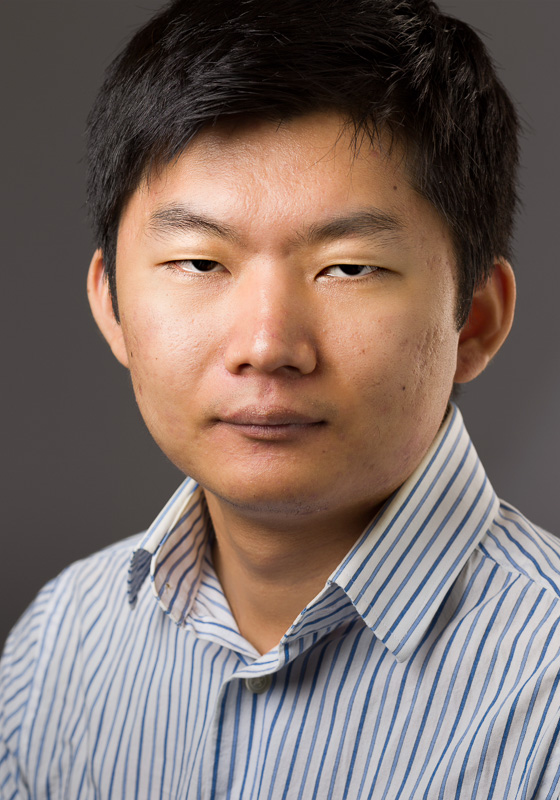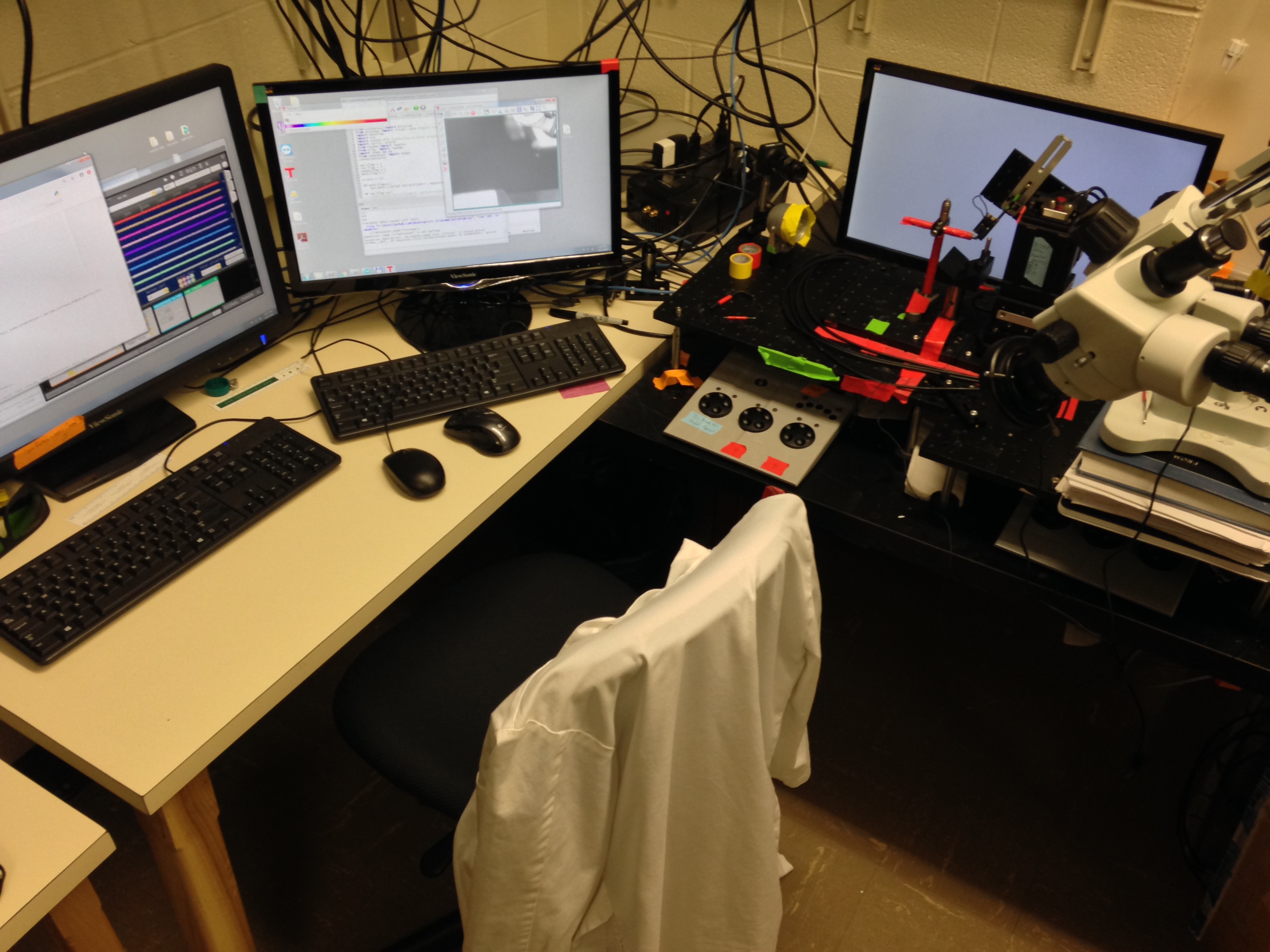
Alexandr Pak

Training Group:
Integrative Neuroscience
Mentor / Lab:
Dr Alex Chubykin
Specific Research Area / Project:
Neural Basis of Visual Change Detection
Undergraduate Institution:
Nazarbayev University, Kazakhstan
Lab / Personal work-related websites:
Lab WebsiteResearch Profile:
Neuroscience is an exciting and diverse field of study aiming at understanding a brain function. One of the major goals of neuroscience is to elucidate a molecular, cellular, and neural basis of memory, learning, and perception. In order to achieve this, neuroscientists employ a wide range of techniques from various fields including, but not limited to, molecular, developmental biology, computational modeling, and psychology.
My research, in particular, focuses on neural circuits underlying visual information processing and plasticity/learning. I mostly employ in vivo electrophysiology, a technique that allows to record electrical signals generated by neurons, to gain insight into the brain activity under various conditions. We use mouse as our model organism, which gives us an access to a wide variety of transgenic strains to study visual processing and plasticity in healthy and disease affected mouse models. Furthermore, we employ recently developed tools like optogenetics to interrogate neural circuits. This technique allows us to specifically manipulate genetically tagged neural populations and establish cause-effect relationships between neural circuits and perception/behavior. In addition to using cutting edge recording and manipulation technologies, we utilize the strength of scientific programming to effectively process and analyze neural data.
One of the specific questions we are currently pursuing is how experience influences brain circuits and shapes our perception. In order to answer this question, we expose animals to various visual stimuli and record their neural activity before/after it to identify neural and physiological markers of experience. Another project aims at identifying specific neural circuits affected in mouse model of autism. We use visual learning paradigm to identify exact neural circuits and/or cell types affected by the disease. Overall, the significance of our work lies not only in basic understanding of the brain function, but also mapping affected neural circuits in various mouse disease models.

About Me:
I am a 4th year PULSe student in Integrative Neuroscience Training group. I graduated with BS in Biological Sciences from Nazarbayev University, Kazakhstan (KZ). I was told many times at Purdue that I am the first person they met from KZ. People usually ask about my home country and I always enjoy sharing my cultural experiences. I really like diversity at Purdue and an opportunity to experience so many different cultures. I enjoy talking to people from diverse backgrounds and learning how different, and at the same time similar, people are.
I also like interdisciplinary nature of my research. I have a wide variety of work to do including animal surgeries, behavioral studies, microcontrollers, programming, data analysis, reading and writing papers. This makes it hard to be bored by the work, which is important to keep going forward.
PULSe program is great for the same reasons as it accepts students from diverse cultural and academic backgrounds and allows them to have rotations in various departments. In my opinion, it is one of the major strengths of the program. I, personally, rotated in drug discovery, structural biology, cellular and systems neuroscience labs. Through this experience you really get to know graduate work style and most importantly understand what you like and what you are good at, discovering your inner self.
Awards:
- PULSe Five Minute Thesis (5MT) Competition 2018 Winner
- Purdue Institute for Integrative Neuroscience Travel Grant Award
Publications:
- Kissinger, S. T.,* Pak, A.*, Tang, Y., Masmanidis, S. C., & Chubykin, A. A. (2018). Oscillatory encoding of visual stimulus familiarity. Journal of Neuroscience, 3646-17. * these authors contributed equally to this work
Presentations:
- Pak, A., & Chubykin, A. A. How visual experience reshapes neural population activity. Invited Talk at PULSe Seminar Series, Purdue University, IN, USA (2018)
- Pak, A., Kissinger, S. T., & Chubykin, A. A., Spatial frequency-specific entrainment of slow oscillatory activity in primary visual cortex (V1). Poster at Neuroanl Circuits Meeting. Cold Spring Harbor Laboratory, NY. (2018)
- Pak, A., Kissinger, S. T., & Chubykin, A. A., Spatial frequency-specific entrainment of slow oscillatory activity in primary visual cortex (V1). Poster at Sensorium. University of Cincinnati, OH. (2017)
- Student Profiles
- Aktan Alpsoy
- Andrew Asberry
- Carlos A. Brito-Sierra
- Clairissa Corpstein
- Hao Chen
- Rachel Foguth
- Logan Ganzen
- Veronica Heintz
- Ethan Hillman
- Kathryn Jacobson
- Steven McKenzie
- Vinay Menon
- Jasmine Moore
- Alexandr Pak
- Raquel Peron
- Runrun Wu
- Sudhanshu Shekhar
- Janiel Ahkin Chin Tai
- Yu Tang
- Chelsea Theisen
- Samantha Tinsley
- Nicole Vike
- Ravi Yadav

